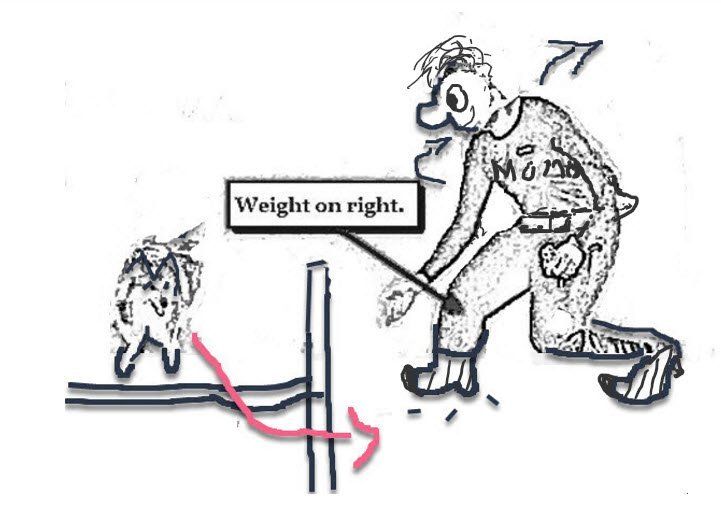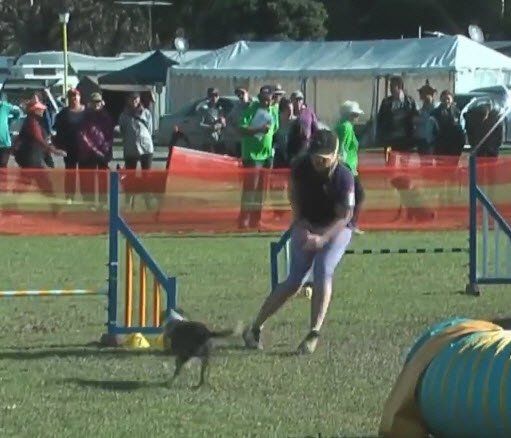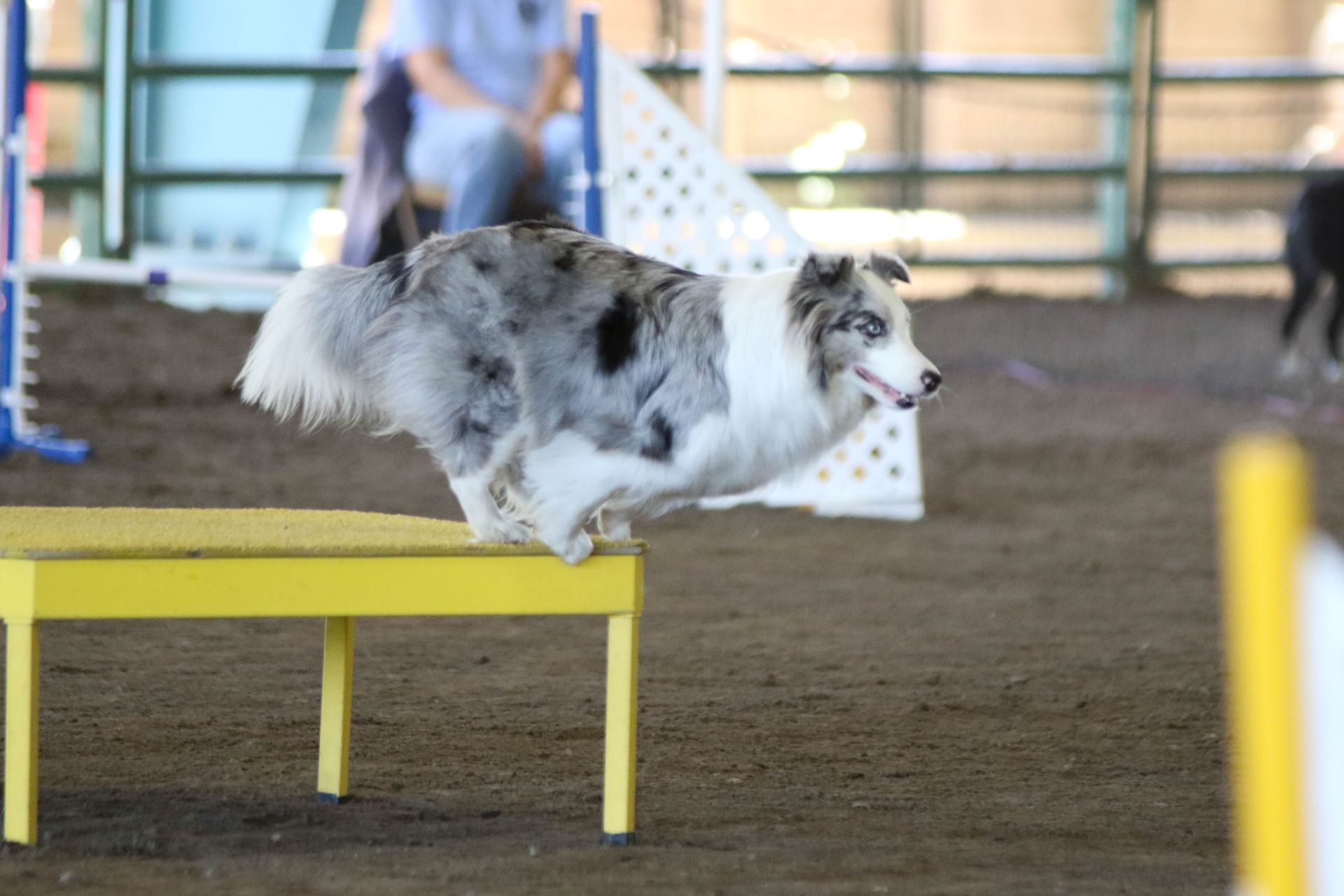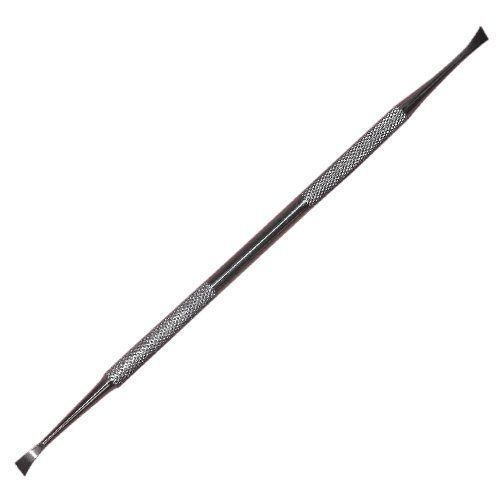
Learn the Reverse Spin in Dog Agility!
The
reverse spin
is a dog agility technique developed by Janita of
One Mind Dogs . Using this method you spin (or turn) opposite to the direction your dog is turning.
Step 1:
If your dog turns to the left, your chest turns to the right. Here I am showing the footwork for this reverse spin, but you can move your feet in other ways. The important thing is the turning of your chest NOT with your dog, but in opposition to your dog's turn.
A reverse spin helps the dog make a tighter turn than the traditional post turn. When starting this move, first look at the dog to make a connection then look at the take-off point.
If your dog is coming around the LEFT side of a jump, it is best to do a rhythm change and stop on your right foot at shown. (
Step 2 continues below after a word from our sponsor.)
Step 2 of Reverse Spin
Again, if your dog turns left you will stop on your RIGHT foot. That's your FIRST step. Next, you step back onto your ________ left/right (pick one) and pivot on the ball of you foot.
As you step back onto your left foot, you pivot and turn to the RIGHT as your dog turns left.
Keep looking at the take off point as long as possible.


Step 3 of the Reverse Spin.
Here is the third step in the reverse spin. Notice that you are leading with the same hand that your started with.
When starting the Reverse Spin, first look at the dog to make a connection. Then look at and
point your chest toward the take-off point. When the dog jumps, your chest should still be pointed toward the take-off point.
When your dog lands, your chest and eyes will be directed to the intended line. You will be leading with the same hand you used to cue the jump.
Progress Check
1. When starting the Reverse Spin, first look ___ ___ _____.
2. Next, look at the ______ __________.
2. Next, look at the ______ __________.
3. Should your chest be pointing over the jump as the dog takes off? Why or why not?
4. When the dog lands where is your chest pointed?
5. Do you turn in the opposite direction from that of your dog?


Above:
One My Dog Coach, Niki Drage, doing a Reverse Spin, one of her favorite OMD moves.
Answers
1. When starting the Reverse Spin, first look at the dog (to make a connection).
2. Next, look at the take-off point.__________.
2. Next, look at the take-off point.__________.
3. Should your chest be pointing over the jump as the dog takes off? No. That will cause the dog to turn wide.
4. When the dog lands your chest will be pointed toward the intended line.
5. Do you turn in the opposite direction from that of your dog? Yes. That helps your dog turn sharply.
Traveling Reverse Spin
In the approach described above, you stop and then rock back and pivot.
In the approach described above, you stop and then rock back and pivot.
But it is also possible to do a traveling reverse spin. This is useful when you need to continue forward as along with turning left or right. The footwork is similar to that already described except that you do not rock back but step forward before pivoting. (More on this soon)

Reverse Spin Video
This video illustrates several dog agility handling techniques including backside send, reconnection after tunnel, "sto;p" cue on dog walk, as well as the REVERSE SPIN.
The REVERSE SPIN is first shown without any annotation. See if you can identify it. The video will replay with annotations so you can check your answer.
The reverse spin is also shown at the end of the video is slow motion.
Dog Agility Techniques Galore!
Thanks for checking out this article on the REVERSE SPIN. in dog agility. The reverse spin is called that because you turn in the opposite direction as your dog. A similar move in dancing is called the reverse pivot, because you turn in the opposite direction of the foot that you step with. The Reverse Spin a bit confusing at first and perhaps counter-intuitive. But practice it and see if it doesn't help you dog make sharper turns. Learn more agility techniques by checking out Momo's Dog Agility Tips Page.



